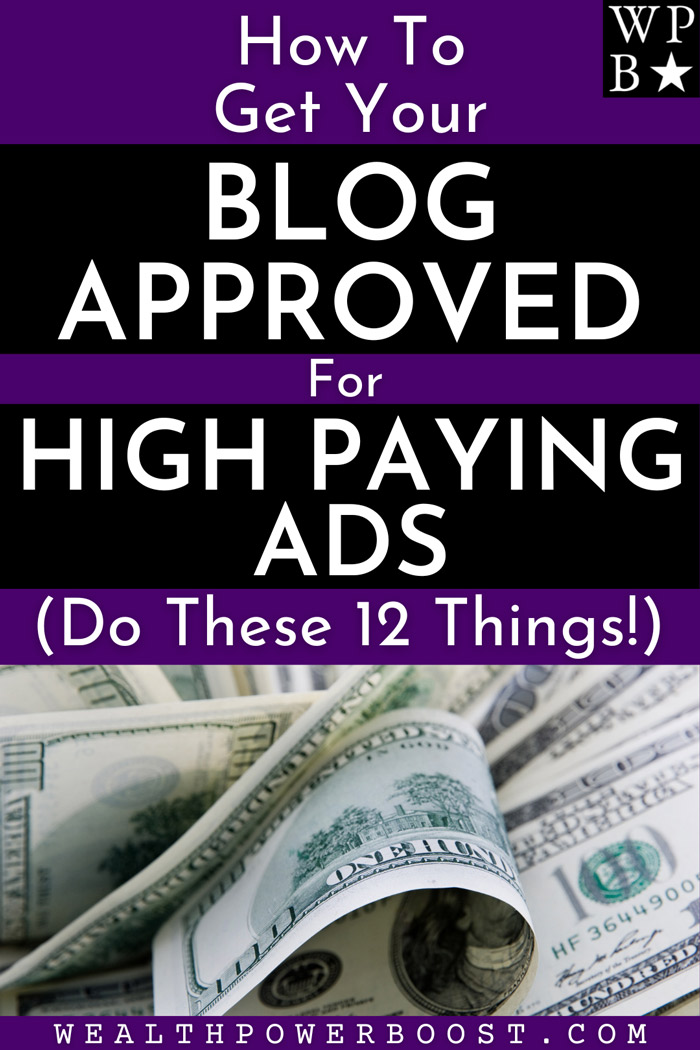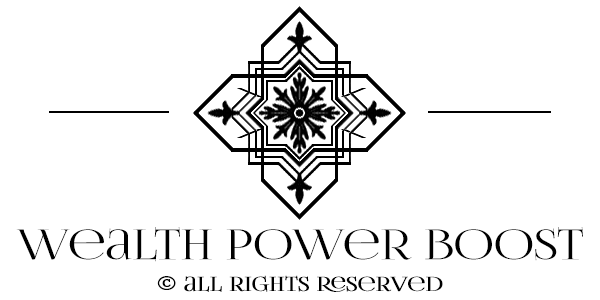This website is not financial advice. Posts may contain affiliate links from which I earn commissions at no additional cost to you.

How To Get Your Blog APPROVED For HIGH PAYING Ads (Do These 12 Things!) Graphic © 8FigureStack. Background Image © Shutterstock #89157067 (under license)
While some ad platforms and affiliate programs are very easy to get approved for, getting approved for the best paying advertising solutions can be notoriously difficult – especially for new and small blogs.
You of course want to get the best paying ads you possibly can on your blog, because this can make an absolutely huge difference to your income!
Related: For a great list of ad / affiliate solutions to apply for, check out my List Of 21 Best Ad Networks And Affiliate Programs For Blogs.
To maximize your chances of getting approved, here is a checklist of factors that are known to make a big difference:
Traffic Requirements
1) Higher traffic volume / unique visitors
An increasing number of ad providers (especially the high-paying ones) have a traffic volume requirement. This might be measured in unique visitors per month, pageviews per month or ‘sessions per month’. Typically the ad network will want to see stats from Google Analytics (although some will accept traffic reports from other analytics apps such as Plausible Analytics). If the advertising platform has a traffic requirement, it will be plainly stated, so you will know where “the bar” is that you have to jump over.
2) Good average user time per session
Some ad networks may want to see this. It’s an indicator that visitors are enjoying your content rather than quickly hitting the back button or closing the tab.
3) No bogus traffic / invalid traffic
The obvious point here is “no fake clicks” and no purchased bot traffic to artificially inflate your metrics. Don’t do that. However, also check your stats and if there is any significant volume of “weird” traffic from some odd / incomprehensible source, investigate.
4) Higher proportion of traffic from the “prosperous” English speaking countries, especially USA
A few of the high paying ad networks will request this, although there are numerous ad providers that also accept “worldwide traffic”. USA, Canada, UK, Ireland, Australia, New Zealand are known as the “top 6” within the industry. This is because they have a large pool of advertisers who pay well in return for having their ads displayed – and because the traffic from these countries generally results in higher “conversions” and public spending.
Technical Requirements
5) Technical Audit
Fix any technical problems, code errors, broken links etc. Try Brokenlinkcheck.com for broken links. Check that the site works properly and that there is nothing “visibly broken” in different browsers and on both mobile and desktop.
Site must also be free from malware. There are WordPress plugins such as Sucuri that will run malware checks on your site.
See my 50 Apps And Tools That Helped Me Build A 1.9 Million Dollar Internet Business and scroll down to the “Free Tech & Diagnostic Tools” section for some additional useful technical audit tools.
Some ad providers require now that you have an SSL certificate installed – and it’s generally advised to get this handled anyway as its a good practice for many reasons. This can be done for free using “Let’s Encrypt” (my Bluehost hosting includes this by default) and the WP Force SSL by WebFactory Ltd WordPress plugin, which redirects all traffic from HTTP to HTTPS for your entire blog.
6) Good, simple, clear site navigation and not already swamped with ads
Make sure your blog’s layout and “user experience” are simple to comprehend. A visitor should be able to figure out what is going on and how to find what they are looking for quickly. A good tip here is to invite a friend to look at the site and see if they get stuck. If you have kids, invite them to take a look – because of the rule of thumb of making the site so clearly laid out that your kids could figure out how to use it easily!
If you already have ads plastered all over the page, might be beneficial to remove some of them while you are going through the approval process for an ad provider…!
7) Clean, modern look
Don’t have the site look “circa 1999”, or “weird”, or with an oddball layout. It doesn’t have to be “super fancy” but make sure it has a clean, tidy, professional-style presentation. Colour clashes might be a no-no also – I would say stick to black text on a white background for the main page – with blue-spectrum graphics and highlights. Blues are a good pick because these are colours typically associated with professionalism and trust.
Content Requirements
8) Content freely available without paywall or sign-in requirement
Users who pay for subscription content often do so in order that they can have an ad-free experience. This is not really typical for blogs, which generally provide free content.
9) Avoid controversial, spammy or restricted topics
No adult content, “fake news”, illegal etc. This is important. If a blog is too edgy or could otherwise be seen as “problematic”, it will be rejected by many ad providers. See my list of Top 26 HIGHLY PROFITABLE Blog Niches (Plus 11 You Should AVOID At All Costs!)
10) Content Volume
As a good general “baseline” target, site should have 50+ pages at the minimum. I’ve tried applying for example for AdSense on “micro websites” with only a few pages, and got denied. I added a number of new articles, reapplied and was approved. I applied for Infolinks on this blog when I was at 20 posts and got approved – although many of the posts were 5,000+ words and some even 10,000+. I’m not sure how much of a difference this made.
11) Content Quality
Full length “long form” good quality articles only; proof read and fact checked. No ‘stub’ pages. The general rule here is that your content should provide value. The better paying ad networks such as MediaVine are quite strict on this and request “long form” (typically 1,500+ word blog posts) and high value content only.
12) Content Originality
Your content should be 100% original and unique to you. No duplicate / scraped / copied content. This is important – and many advertisers will check.
A while back, I applied for Ezoic on a website for which I had been hiring writers to make the content – and they ran a duplicate content check. It turned out that one of my writers had been plagiarizing and I had not caught it! Embarrassing!
I had to repair their content, which had paragraphs lifted from various scientific reports and given a “thin rewrite”: The writer had been changing a couple of words in each sentence in a weak play to “fly under the radar”… not good. Fortunately it was only a very few articles and once I fixed the problem, Ezoic re-checked and accepted the site.
“Rewriting” or “spinning articles” is a fairly widespread practice among freelance writers – so if you are hiring writers, definitely run your content through Copyscape and/or copy-paste some sentences into Google search – to see if they are plagiarizing. In general I would recommend to run through the entire blog and fix any issues here!
That’s it! Check out my List Of 21 Best Ad Networks And Affiliate Programs For Blogs, which is organized into easy, medium and “difficult but high paying”.
– Staxxx

